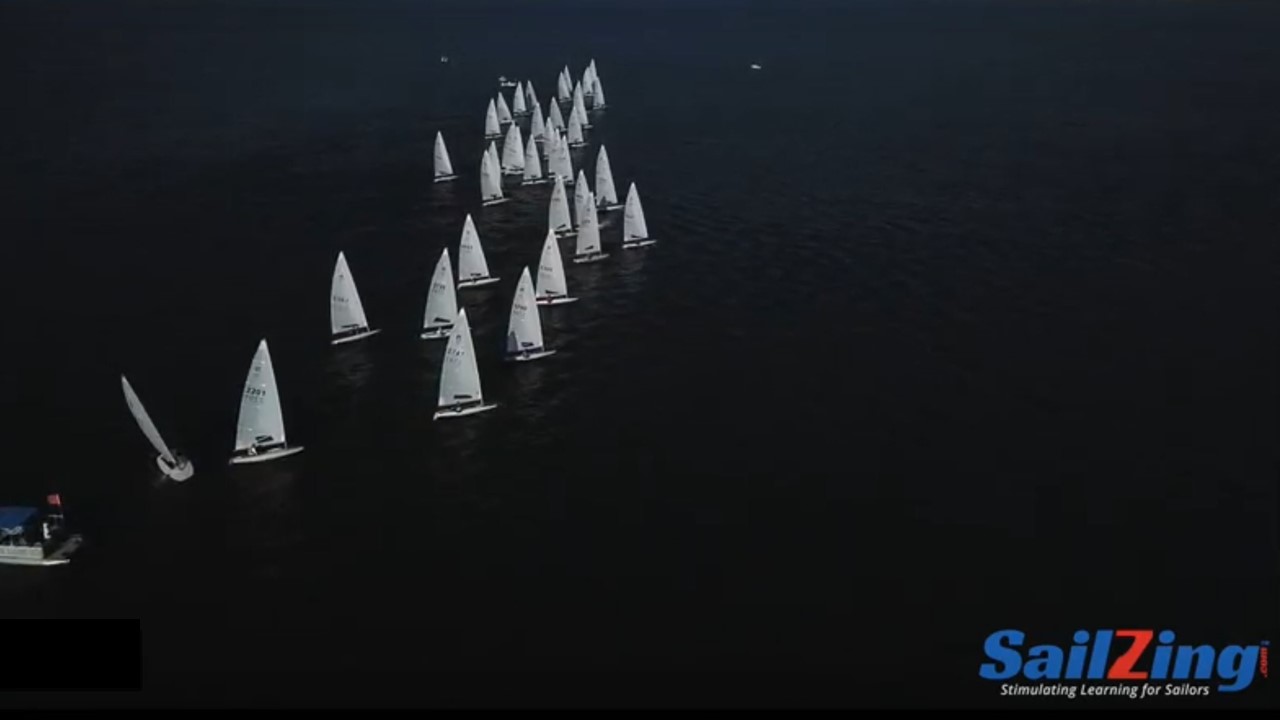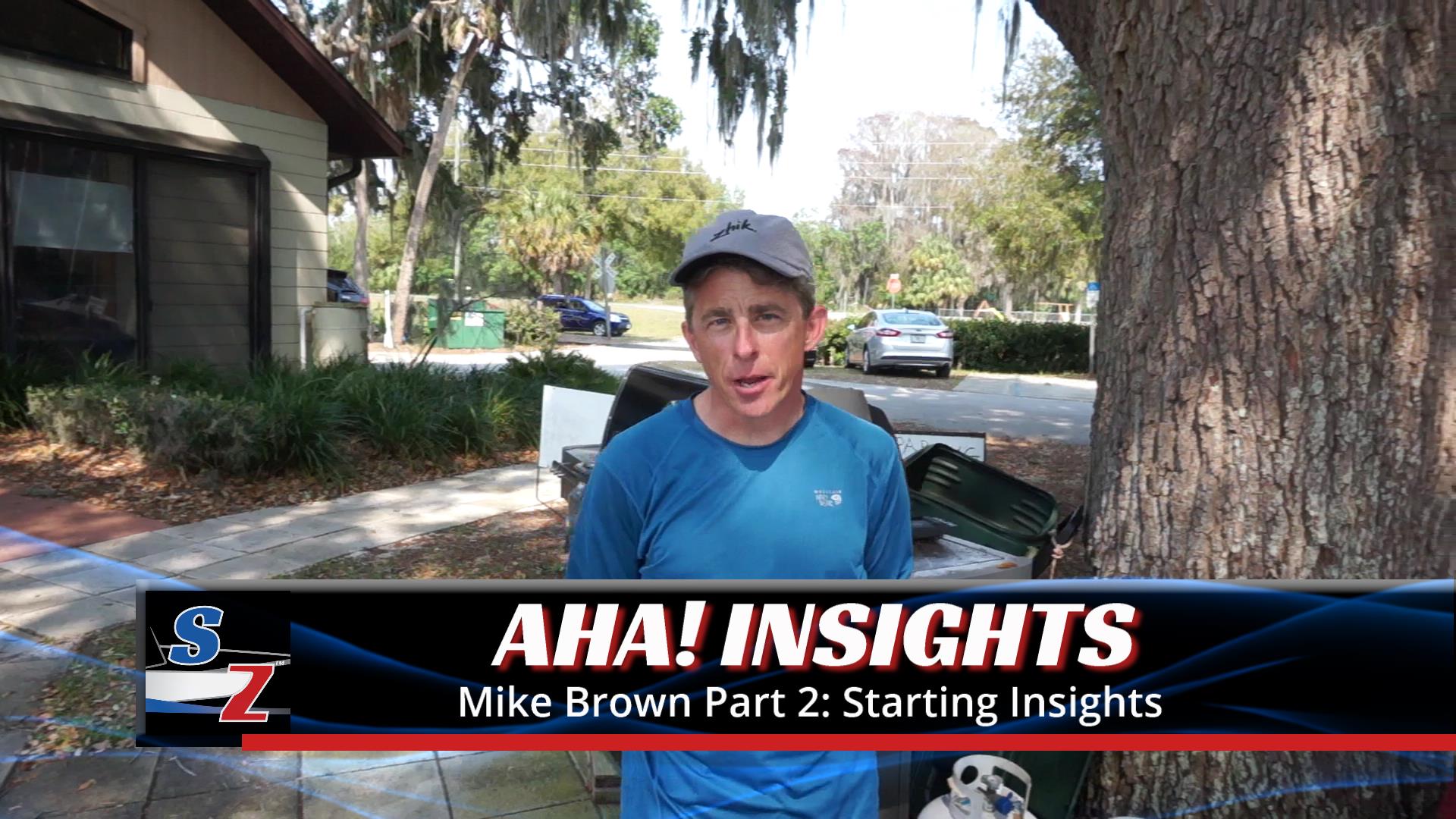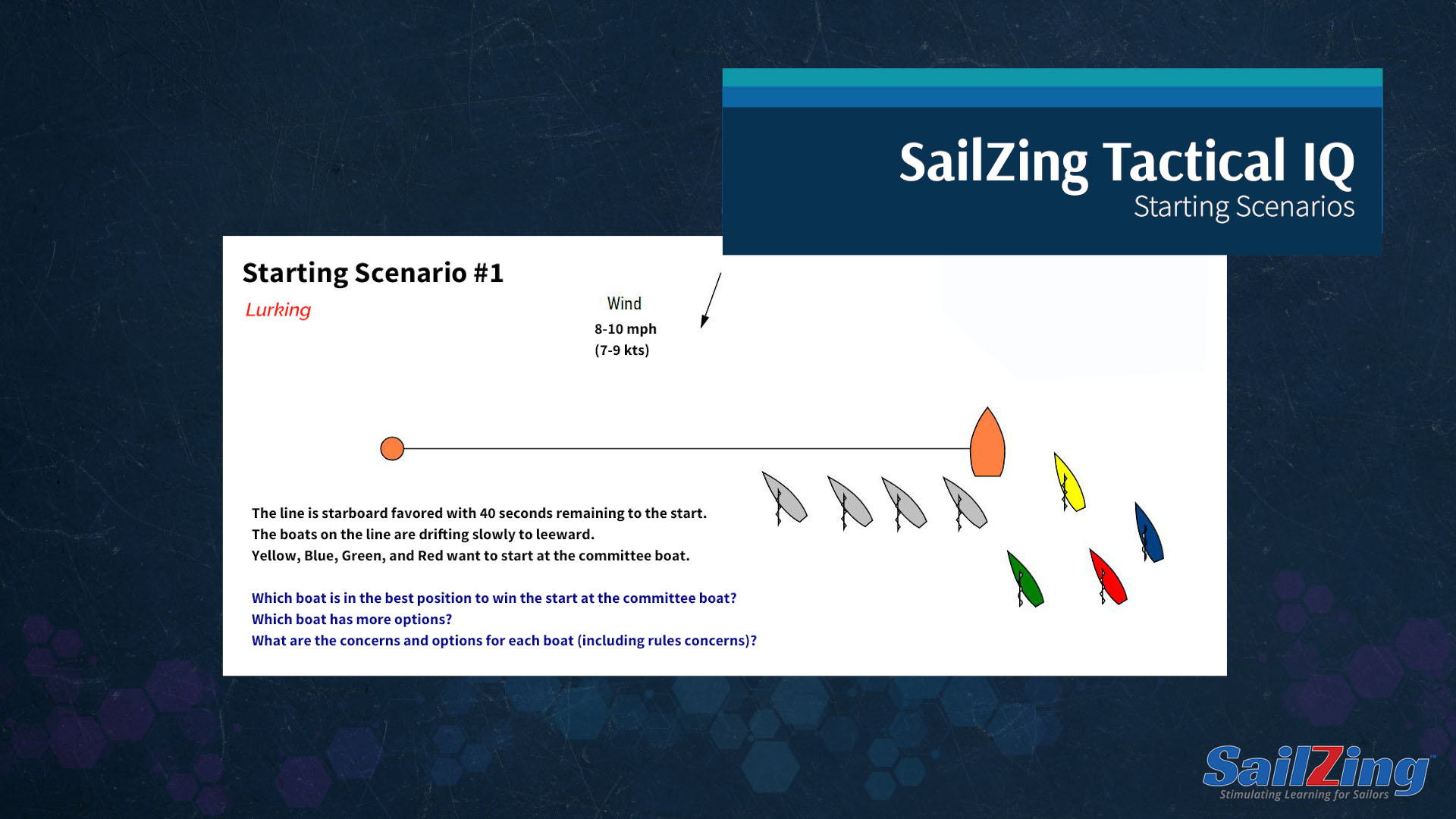Bad starts happen. As we showed in Starting Performance Observations, it’s common to see half or more of the fleet in bad air after the start. Willie McBride points out that the top three teams at the 49erFX 2017 worlds all had less than ideal starts in more than half of the races.
Bailing out immediately isn’t always the best response to a bad start. You should consider several recovery options and use the best one for the situation. In this post, we collect advice from the experts on options.
Our sources include the following:
Roble / Shea Sailing’s ILYA Fast Forward webinar on Upwind Tactics. View the excerpt on bailout options below.
How To Recover from a Bad Start | Sailing World, by Andy Horton
Getting Clear Air in Big Fleets, by Nada Skenderija
The Importance of Starting is a Myth: Nail Your Escape to Move the Needle, by Willie McBride
Try These Moves After Your Start, by Dave Dellenbaugh in Sailing Breezes,
Roble / Shea Video Excerpt – Bad Start Bail Out Options
Four Bad Start Recovery Options
#1. Bail Out before the Start

Don’t wait until after the start to realize you’re in trouble. If you’re in the second or third row with 20 seconds to go and no hole ahead, one option is to get on port before the gun and start ducking boats. This can be surprisingly effective.
In one of their videos, Roble/Shea called this a rabbit start bailout, because you are ducking sterns closely to stay with them on the same ladder rung.
This technique works because the wind bends around the starboard tack boats, creating a lift for boats behind on port. In Getting Clear Air in Big Fleets, Nada Skenderija shows how effective this option is with overhead photos.
Pros, Cons, Execution
- Works great if you want to go right. If you want to go left, works better if don’t have to sail too far to tack into a lane of clear air. Doesn’t work if there are multiple rows of starboard tackers to duck.
- Get onto port ASAP, preferably before the gun.
- Keep your speed up and duck closely to maintain your ladder rung.
- Tack back when you have a clear lane and as dictated by your strategy and wind conditions.
#2. Patient Bailout

Willie McBride calls this a Plan B situation. You’re in or near the front row, but perhaps without room to bear off for speed. You might be able to hang for a minute or so, but eventually you’ll get back-winded by the boat to leeward, and/or rolled by the boat to windward. In this situation, you have a little time to wait until traffic thins out before bailing out.
Pros, Cons, Execution
- Keep a constant watch for a clear lane on port.
- Wait until traffic on your hip clears out to avoid getting ping-ponged or sailing in bad air.
- Try to tack before the boats ahead of you tack. Waiting more than 60 or 90 seconds increases the chance that you’ll get tacked on.
- Tack back when you have a clear lane and as dictated by your strategy and conditions.
#3. Prompt Bailout

Willie McBride calls this a Plan C situation. You’re second or third row immediately, with no hope of making it to the front row. You’re going slow and losing ground rapidly. Unlike a Plan B situation, you don’t have the luxury of being patient, and should tack out within 30 seconds or so.
Pros and Cons
- Works best if you can tack into a clear lane on port and sail for awhile without getting ping-ponged. Doesn’t work if you have to deeply duck rows of boats.
- Keep a constant watch for a clear lane on port.
- With a boat on your hip, you may have execute a tack and dip. Foot off to create separation, then tack and aggressively dip. This can be scary, and Roble/Shea suggest practicing before trying it in a race.
#4. Stay Put or Foot Off

Sometimes getting to the next shift or puff is top priority. If so, it might be better to sail in bad air for awhile. You can stay put or, if there’s room to leeward, you might get into clear air by footing off with as much speed as you can muster.
Pros, Cons, Execution
- Works best in heavier air, or when you don’t have to sail far to the next puff or shift, or when you need to go left and aren’t losing much ground to the boats ahead.
- Keep your boat moving as much as possible. Don’t try to pinch. Ease sails a bit if necessary.





